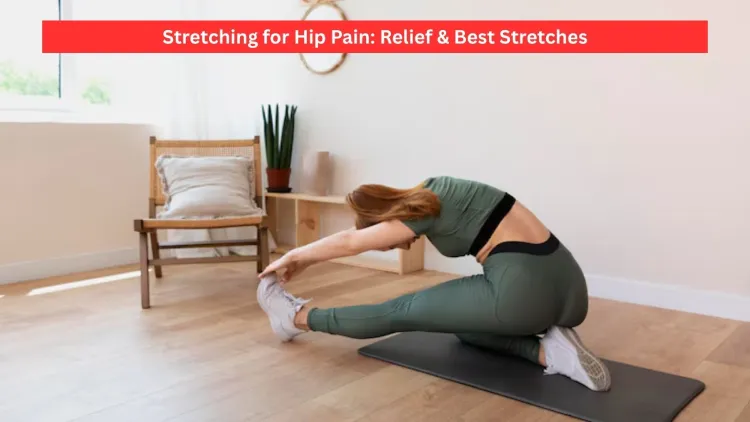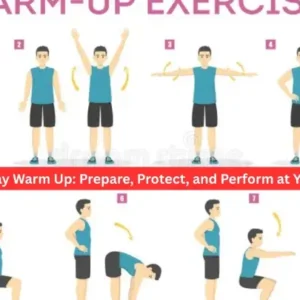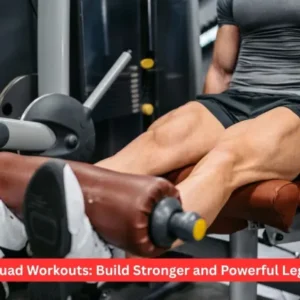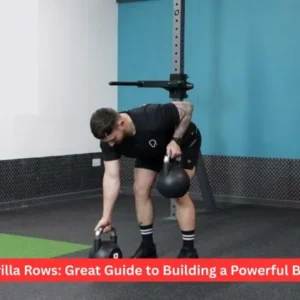Without hip pain, you may not be able to live a pain-free life; you will not only find it difficult to sit in your office, but it will equally affect your sleep pattern. Hip pain is commonly due to bad posture, lack of activity, injury or diseases such as arthritis and bursitis, causing tightness in the muscles and stiffness in the joints. As lucky as it might be, stretching for hip pain is one of the most convenient and successful solutions. Performed well, stretching positively affects the flexion of the body, circulation, range of movements, and decreases inflammation around the hip joint.
Here is everything you need to know about stretching for hip pain: how this technique works, what stretches are the most effective at relieving hip pain at home, and the tricks of the trade to make the best of your routine. We will also dwell upon the situation when it is possible to consult a doctor, and stretching and strength training may help in the long term. Whether that is because of discomfort after spending a long time sitting or you want to avoid latent injuries in the future, this guide will allow you to move better and feel better.
Why Stretching Helps with Hip Pain
The hip serves as the largest and one of the most significant joints in the human body, taking up the weight and allowing a broad variety of movements. Tightness or an imbalance of muscles surrounding the hips, such as the hip flexors, glutes, hamstrings and adductors, could exert too much stress on the hip joint, hence resulting in pain and stiffness.
Hip pain stretching can be beneficial in aiding recovery because it:
- Improving flexibility: Stiff muscles cause pain in the hip joint, and thus, they should be relaxed.
- Increasing circulation: Stretching increases the blood circulation in the involved part, which enhances recovery and removes any inflammatory conditions in the process.
- Increase in range of motion: Frequent stretching lubricates joints and makes them less stiff and less susceptible to additional damage.
- Alleviation of compensatory pain: Tight hips contribute to an excess in the utilisation of the lower back and knees. A balanced state is restored by stretching.
Briefly, stretching of hip pain operates through attacking the causes of pain, which include stiffness, loss of motion, and muscle imbalances.
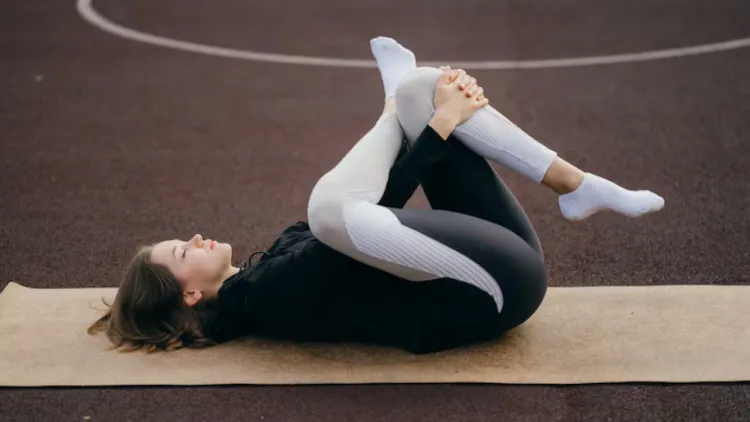
Best Stretches for Hip Pain Relief
After hip pain, the stretches can be used to relieve pain and improve movement. It is better to start your session with some light warm-up (i.e., marching in place or walking) to prepare your muscles; 3-5 minutes will be sufficient. Gently execute every stretch and maintain it for 20-30 seconds, and repeat 2-3 times on both sides. Do not force yourself into pain; breathe deeply and evenly.
1. Hip Flexor Stretch
Targets: Anterior part of the hip, specifically the iliopsoas muscles
- Get on your right knee and place your left foot forward at a 90-degree angle.
- Balance forward slowly, taking your weight on your hips, then bring the hips down till you can feel a stretch along the front of your right hip.
- Your back should be straight, and engage the core. Do not bend your lower back.
- In order to make this stretch more intense, lift your right arm over your head, and slightly bend to the left.
It is one of the best stretches when it comes to targeting hip pain due to tight hip flexors, especially if one spends a lot of time sitting.
2. Figure Four Stretch
Targets: Piriformis, glutes, and outer hips
- When you are lying on your back, keep your knees bent.
- Hold hold right ankle bent on the left knee, like the figure-four shape.
- Find the back of your left thigh and give an easy pull towards the chest.
- Keep holding the stretch and feel the release on the right hip.
The pose is also very good in alleviating hip tightness and enhancing flexibility in the glutes and external rotators, which are suitable for the reduction of hip pain.
3. Seated Forward Fold
Muscles: Hamstrings, lower back and hips
- Kneel on the floor in a sitting position, keeping your legs straight in front of you.
- Exhale, lengthen the spine, and, in the next breath, bend forward at the hips.
- Lean forward to your feet, straightening your back and lifting your chest.
- Halt when you get a stretch in the back sides of your hips and your legs.
This is a standard stretch and is a release of the posterior chain, which can go a long way in relaxing tension and assist in stretching as a remedy for hip pain.
4. Child’s Pose
Targets: Lower back, hips and inner thighs
- Get down on the floor and settle down on your heels.
- Keeping your knees slightly spread out, bend over, keeping your arms in the forward position.
- Lying down on the mat, breathe deeply with your forehead on the floor.
- Drop your hips to your heels and relax your body.
That tool, Child’s Pose, is a very effective stretch that leaves the hip area very comfortable and relaxed because it stretches the tight muscles in the hips very easily.
5. Butterfly Stretch
Targets: Hips and inner thighs (adductors)
- Think of a diamond and sit on it, basically with your feet together and knees pointing out.
- Put your hands on your feet, and sit tall.
- It is important to gently push your knees down onto the floor to push the stretch further.
- You can also lean forward a bit to add intensity.
- It is an excellent stretch to improve the flexibility of the inner thighs and tackle the tightness of the hips that one may experience during long sitting.
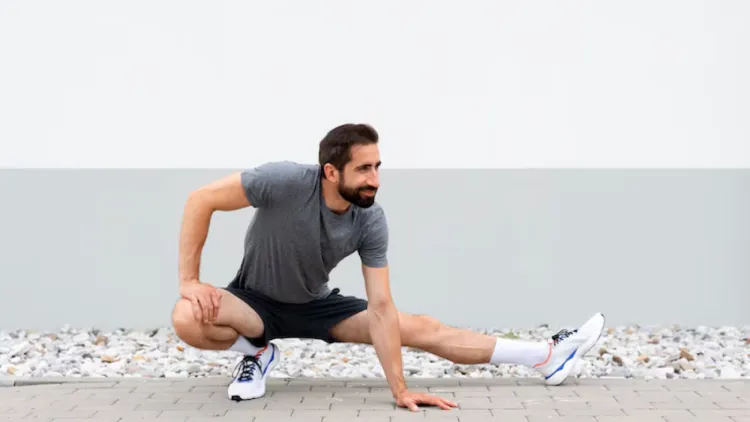
Stretching Tips for Hip Pain
In order to get the best out of stretching to relieve hip pain, follow the following tips:
- Make it regular: Instead of doing a long stretch session once a week, it is better to do it a few times a week. The practice should be done every day.
- Take a warm-up: Properly warmed muscles are less likely to be injured. Always begin with an easy warm-up.
- Avoid bouncing: Maintain hold and free movements. Strain may occur from jerky or bouncing movements.
- Breathing focus: Tight muscles become relaxed with deep breathing and enhance the effectiveness of stretches.
- Be attentive to your body: A little pain is not a problem, but cease the activities immediately when you experience severe pain or numbness.
- Build around muscles: Stretching can also be accompanied by strength training to provide stability to the joints.
- Stretch both sides: Whenever you are stretching both sides, be even; do not stretch unevenly.
At this point, these tips will allow you to make your hip pain-based stretching routine safe, sustainable, and good in the long-term perspective.
When to See a Professional
Though stretching for hip pain helps most individuals, it is never a replacement to professional medical attention in every situation. In case you continue or even increase your symptoms in spite of regular stretching, visit a healthcare provider or physical therapist or orthopaedic specialist.
You should call a professional in case of the following:
- Pain in the hip which fails to respond to rest and stretching
- There is numbness, tingling or weakness in the legs
- The redness or warmth of the hip region or swelling.
- Hip pain after a fall, a trauma or an accident
- Poor ambulation and weight bearing on the involved leg
A qualified specialist is also able to prescribe a specific treatment plan that could involve physical therapy, an imaging examination, or another treatment alternative other than stretching.

Final Thoughts
A stretching for hip pain is a very effective, albeit easy exercise, used to relieve pain and enhance flexibility as well as maintain healthy joints. Whilst proper and regular practice may deliver a tangible improvement in your everyday mobility and improve the quality of your life.
You can eliminate stiffness and become able to move again by including stretches that target hip flexors, glutes, hamstrings, and the inner thighs. You know, it is just important to listen to your body, be persistent, and in case you see symptoms, turn to a medical expert.
Stretching for hip pain can be used by athletes, people working behind a desk, and those suffering from age-related conditions and stiffness: it is safe and natural; it will help get rid of pain and preserve your hips well into old age.
Frequently Asked Questions
1. How frequently can I exercise stretching in case of hip pain?
To get optimum results, you are advised to stretch at least 3-5 times a week. It would be better to do stretching every day, in case you target hip pain that your sitting position or tight muscles cause. Never forget to warm up first and also to overstretch.
2. Will stretching of the hip cause me more pain?
The stretching exercise should not be painful with a sharp, acute subjection. In the case of worsening symptoms or the appearance of new pain during or after the stretch, you are better off stopping the process and getting medical advice. Normal sensation is some mild discomfort, but not pain or numbness.
3. What is the duration before the results of stretching come into effect in hip pain?
A lot of individuals feel relieved after a couple of sessions with proper and regular technique. But to get permanently better flexibility and less stiffness, you may need a matter of weeks of consistent stretching that will be reinforced by good posture and switching to other activity choices that are non-stiffening.
4. Do I need to stretch when I have hip arthritis or bursitis?
Carefully, yes. Mobility and stiffness may be alleviated using controlled stretching that is gentle and helps in reducing arthritis or bursitis. You should seek advice of a doctor or physical therapist who will advise you on good stretches that are specific to your condition and safe.

